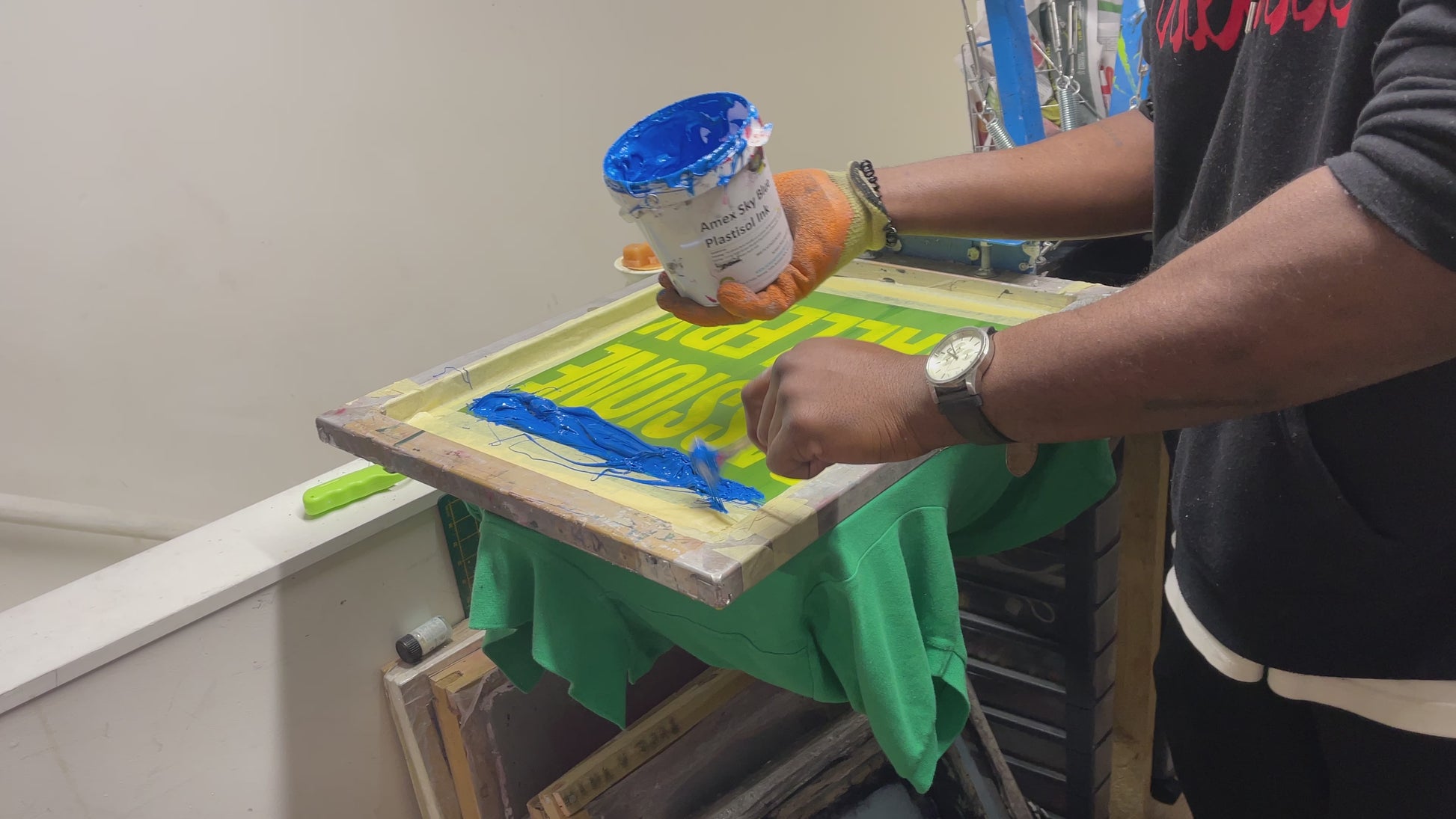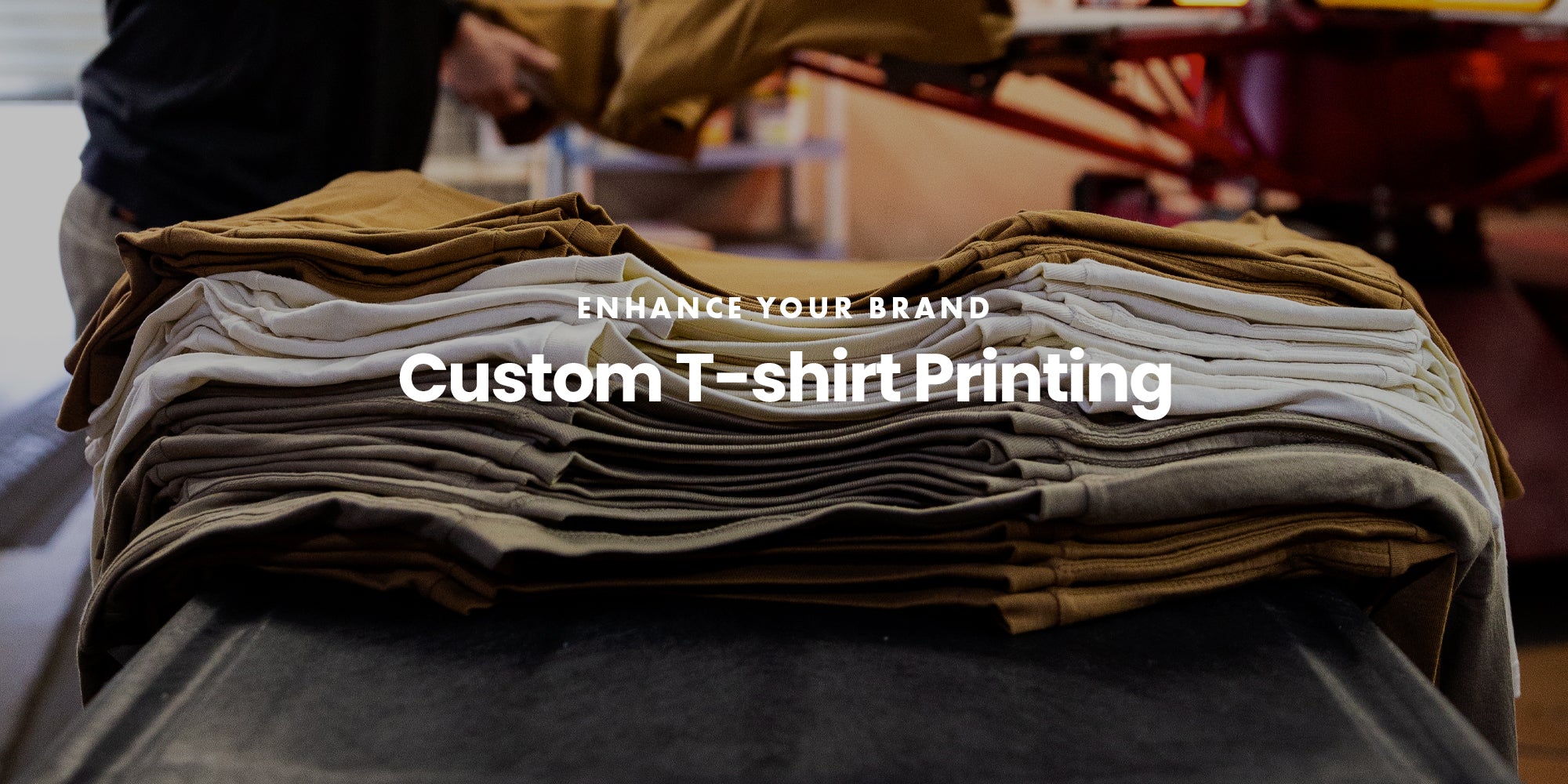Display Printing Uncovered: Everything You Need to Understand About Tee Shirt and Garment Printing Strategies
Display printing is a fascinating approach that incorporates art with strategy, offering unlimited possibilities for creative thinking. All set to check out the important aspects that make screen printing an art type?
The Basics of Screen Printing: Just How It Works
When you plunge into display printing, you'll discover it's both an art and a science. At its core, screen printing entails creating a pattern, or display, that allows ink to pass with just in details locations.
Placement the screen over the material, after that make use of a squeegee to press ink through the screen onto the garment. Each action is crucial, and mastering them will raise your screen printing abilities, transforming simple garments right into distinct, expressive pieces.
Kinds Of Screen Printing Methods
As soon as you grasp the basics of screen printing, it's time to discover the various strategies that can boost your layouts. One preferred method is conventional display printing, where ink is pressed with a stenciled display.
An additional alternative is plastisol printing, recognized for its toughness and brilliant shades, making it a favorite for numerous brands. Experiment with halftone printing to develop slope effects and complex designs.
Essential Devices for Display Printing
To achieve stunning outcomes in screen printing, having the best devices is basic. Initially, you'll require a tough display printing frame, which holds the mesh that transfers your design onto the garment. Next, purchase top quality mops; these are essential for applying ink equally across the screen. You'll also need an excellent direct exposure system to create your displays, as well as a washout booth for cleaning them after usage. A dependable warmth source, like a conveyor dryer or warmth press, is crucial for treating your prints to ensure longevity. Don't fail to remember an appropriate work space, equipped with tables and storage space for your products. Safety gear, such as masks and handwear covers, will certainly keep you safe from chemicals and inks. With the right tools, you'll be well on your method to generating professional-quality prints.
Selecting the Right Inks and Products
When choosing inks and materials for screen printing, you need to consider the type of ink that works best for your task. Consider textile compatibility to assure your designs look last and wonderful lengthy. Also, check out environment-friendly ink alternatives to make your printing process a lot more sustainable.
Kinds of Screen Inks
Choosing the best display ink is necessary for accomplishing dynamic, sturdy prints that satisfy your project's needs. There are several kinds of display inks to take a look at. Specialized inks, such as glow-in-the-dark or metallic, can include one-of-a-kind impacts to your designs.

Material Compatibility Factors To Consider
Understanding material compatibility is essential for achieving premium display prints, especially since various products react distinctively to various inks. When picking inks, think about the textile type-- cotton, polyester, or blends. For cotton, water-based inks function well, offering gentleness and breathability. Polyester, on the various other hand, typically needs plastisol inks for far better adhesion and vibrant colors. You could need to utilize a mix of both kinds if you're printing on blends. Constantly check your inks on example textile to guarantee they adhere effectively and preserve color honesty. In addition, remember that material weight and structure can influence the last end result, so selecting the ideal ink and product combination is essential for your task's success.
Eco-Friendly Ink Options
Environment-friendly inks are becoming a popular option for screen printers that desire to minimize their environmental influence while maintaining high quality. When picking inks, think about water-based inks, which are less harmful and less complicated to clean up compared to typical solvents.
Furthermore, seek inks made from sustainable resources, such as soy or vegetable-based choices. By picking the right inks and materials, you'll not only produce stunning designs but additionally add to an extra lasting printing procedure. Make the button, and your prints will reflect your commitment to the environment!
Preparing Your Layout for Display Printing

Submit Format Needs
To ensure your style looks sharp and vivid on fabric, you'll need to pay close attention to file style needs for screen printing. Make certain your layout has a clear background to prevent unwanted white edges on your prints. Keep color settings in mind; CMYK is conventional for display printing, so convert your RGB develops as necessary.
Color Splitting Up Strategies
Color splitting up is a necessary action in preparing your design for display printing, and understanding it can considerably improve your print quality. You'll need to break your style into private colors, as each shade needs a different display during printing. Begin by determining all the shades in your style and develop layers each. You can utilize software application like Adobe Photoshop or Illustrator to isolate and different colors efficiently. Be particular to conserve each layer as a separate documents, typically in a style like TIFF or PSD. This accuracy not only guarantees exact shade depiction but likewise improves the printing procedure. By focusing on shade splitting up, you'll attain expert and vivid outcomes in your screen-printed garments.
Resolution and Dimension
Attaining the most effective outcomes in display printing starts with guaranteeing your design has the ideal resolution and dimension. Preferably, your artwork needs to go to the very least 300 DPI (dots per inch) for sharp, clear prints. If you make use of reduced resolution, your end product might look unprofessional and pixelated.
When it concerns dimension, consider the measurements of your print location. Style your art work to match the final print size, preferably producing it in the actual measurements you'll be printing. In this manner, you'll prevent any unanticipated scaling issues.
Constantly check your layout in both vector and raster formats. Vector graphics can be scaled without shedding high quality, making them ideal for screen printing. Preparing appropriately will guarantee your style looks remarkable on every garment!
Step-by-Step Display Printing Process
Screen printing is a vibrant process that allows you to develop dynamic styles on various surfaces. To get begun, you'll need a screen, emulsion, and your picked ink.
Put ink onto the screen and make use of a squeegee to press the ink via the pattern onto the fabric. Raise the screen very carefully and allow the print dry. You have actually efficiently display printed your design.
Tips for Successful Screen Printing Projects
While you're diving into your display printing jobs, keep in mind that preparation is key to success. Begin by collecting all your materials-- inks, garments, squeegees, and displays. A clean office aids avoid unwanted mistakes, so tidy up before you start.
Next, verify your art work is high-resolution and properly sized for your garment. Examine your display for correct direct exposure and tidy it completely to prevent spots. When blending your inks, adhere to the manufacturer's standards to achieve the ideal consistency.
Throughout printing, use also pressure with your squeegee for constant outcomes. Don't rush; take your time to verify each print satisfies your criteria. After printing, allow your garments dry completely prior to managing or packaging them.
Last but not least, constantly keep a sample of your help future reference. By doing this, you can evaluate your progression and enhance your methods gradually. Satisfied printing!

Frequently Asked Concerns
How much time Does It Take to Establish a Display Printing Job?
Establishing a display printing task typically takes about half an hour to an hour. You'll prepare the screens, mix inks, and readjust journalism. The time differs based on intricacy and experience, so stay arranged!
Can I Print on Different Textile Enters Utilizing the Very Same Strategy?
Yes, you can print on various material types making use of the exact same strategy, however you'll require to change your settings and inks. Some materials absorb ink differently, so experimenting assurances the most effective results for every product.
What Are Common Mistakes to Prevent in Display Printing?
When display printing, avoid typical errors like utilizing the incorrect ink, neglecting correct direct exposure times, or skipping pre-press checks. Always check your arrangement and preserve tidy displays to ensure quality results each time.
Exactly How Can I Properly Clean and Preserve My Screen Printing Tools?
To effectively clean and keep your display printing devices, you need to regularly clean screens with suitable solvents, custom screen printing check squeegees for wear, and guarantee all tools are stored dry and dust-free. Consistency avoids pricey fixings and improves efficiency.
Is Screen Printing Environmentally Friendly Compared to Other Methods?
Screen printing can be extra environmentally pleasant than various other methods, especially if you use water-based inks and eco-conscious products. By choosing sustainable products and methods, you minimize waste and minimize your influence on the earth.
Display Printing Uncovered: Every Little Thing You Need to Know About T-Shirt and Garment Printing Strategies
At its core, display printing includes producing a pattern, or display, that enables ink to pass with only in details locations. Position the display over the material, after that make use of a squeegee to press ink with the screen onto the garment. One preferred method is conventional display printing, where ink is pushed through a stenciled screen.When selecting inks and products for display printing, you require to take right into account the kind of ink that functions finest for your project.